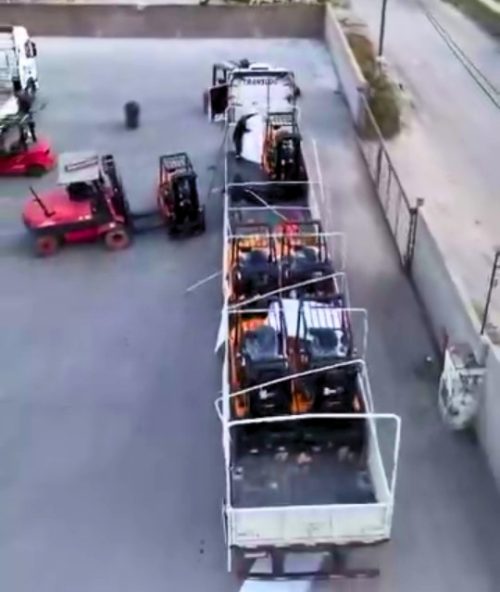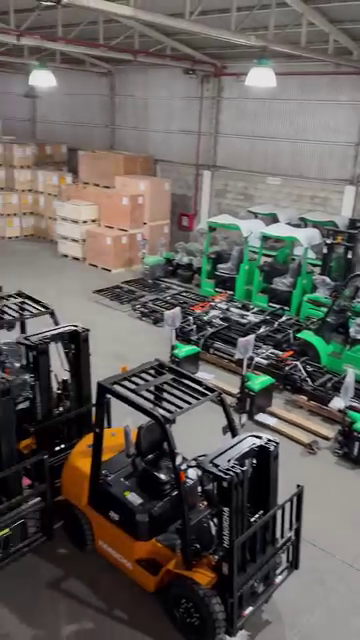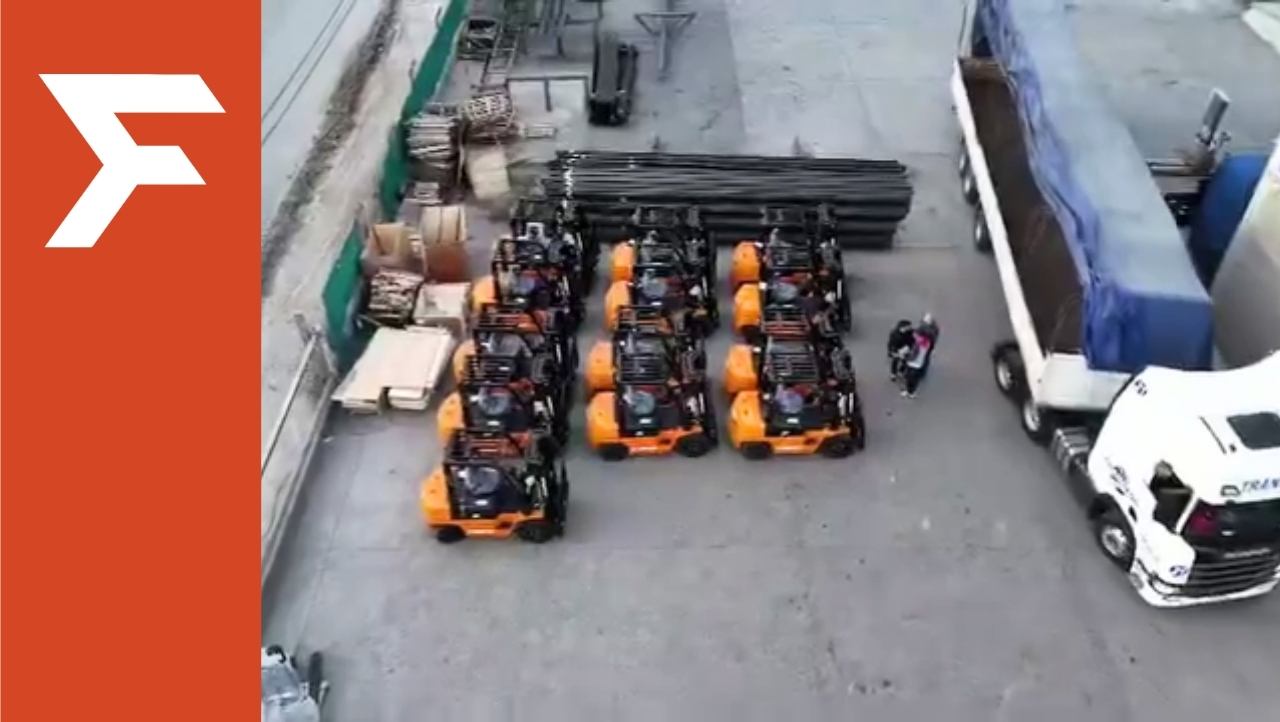From the need to the plan
Pomiglio, the official Hangcha distributor in Argentina, faced a clear challenge: get its forklifts from Ningbo to Córdoba with maximum precision. It wasn’t a standard shipment—several units carried Li-ion batteries (IMO), which demanded extra care and strict control at every step. The route was clear yet complex: sailing from Ningbo, arrival at San Antonio, Chile, deconsolidation at the terminal, and a cross-Andes road leg to reach the plant in Córdoba. In this scenario, there was no room for error
Strategy: clarity at every step
To make the whole operation run like clockwork, we built a step-by-step plan. The decisive lever was the intelligent use of 14 free days at the terminal: that time window let us stage phased withdrawals, sync paperwork, customs, and fleet, and avoid extra costs.
In parallel, we set up end-to-end traceability, with early alerts on mountain passes and time windows coordinated with the plant so every movement flowed without friction.
Technology applied (people + analytics)
This wasn’t only about team experience; we added predictive analytics to anticipate scenarios. We defined the best withdrawal windows based on weather and Andean traffic, dynamically assigned trucks, and prioritized safety for IMO handling.
The human + tech combo delivered what we needed: more control, more visibility, and less variability on the critical stretch from San Antonio to Córdoba

Results
When the last truck crossed the Andes and reached the plant in Córdoba, the story had the ending we aimed for: no stumbles. The 16 containers that left Ningbo and passed through San Antonio completed their journey with clockwork precision.
Each Hangcha forklift, including those with Li-ion (IMO) batteries, was delivered in perfect condition and within the promised timeframe. Beyond zero incidents, the client got what matters most: uninterrupted operations at the plant—no pauses, no surprises, and the confidence that logistics wouldn’t become a bottleneck.
Net result: zero incidents, no extra charges, and the certainty that a demanding route like Ningbo → San Antonio → Córdoba can be executed with full visibility and shorter-than-expected lead times
GEO note: We chose San Antonio (Chile) for terminal capacity and access, then built a steady Andean corridor to Córdoba (Argentina) to trim transit time and reduce risk.
OPERATION EXECUTION
The move combined ocean + road with watch-making precision:
16 containers from Ningbo to Port of San Antonio (CL).
Deconsolidation at the terminal and final road leg to Córdoba.
6 Hangcha forklifts per container, all with Li-ion (IMO) batteries.
Segregation, labeling, and documentation validated with terminal and depot before withdrawals.
Frequently Asked Questions
Why deconsolidate in San Antonio instead of Argentina?
San Antonio offered a workable operational window, terminal capacity, and efficient withdrawals, which—combined with the road corridor—shortened timelines and reduced variability for IMO cargo.
What are “free days” and why do they matter?
They’re free storage days granted by the terminal before demurrage applies. Using them wisely enables staggered withdrawals, better fleet & customs coordination, and cost avoidance.
How are Li-ion (IMO) batteries handled in multimodal operations?
Through segregation, compliant packing and labeling, documentary checks, and close coordination with terminal and depot—plus withdrawal windows and truck assignments aligned with safety SLAs.
What does predictive analytics add to logistics?
It improves withdrawal planning, tunes truck allocation based on weather, traffic, and capacity, and reduces idle time and risk on mountain passes.
Can Framex replicate this solution for other origins/destinations?
Yes. We adapt the multimodal playbook to each industry, origin, port, and destination across LATAM, balancing compliance and speed

Similar case? Let’s talk
If you need multimodal Ningbo–Chile–Córdoba, IMO Li-ion, deconsolidation in San Antonio, or optimized withdrawal windows, we can replicate this playbook and tailor it to your operation: more control, more visibility, less friction.
